by John Pope for The Times-Picayune | The New Orleans Advocate

Lin Emery, a sculptor celebrated for massive, carefully balanced metal pieces that take on a graceful dimension when wind makes them move, died Thursday at her New Orleans home. She was 94.
Emery, whose gleaming works are on display throughout New Orleans and much of the rest of the country, worked for years to develop and refine her craft. Despite the adulation – and commissions – she received, Emery said what she did was hardly mysterious.

“It’s very simple to make things actually move,” she said in a video on the Arthur Roger Gallery website. “Just balance them correctly and let air or water or something move them.”
“It’s very simple to make things actually move,” she said in a video on the Arthur Roger Gallery website. “Just balance them correctly and let air or water or something move them.”
But getting to that point when the works were ready for display required a painstaking process, starting with building three-dimensional models and, once she decided how the finished piece would look, welding the components into place.
Making sculptures that move was something that had intrigued Emery ever since she had spotted a teaspoon “balancing in a crazy way atop a leaning pile of dishes,” said Roger, whose gallery represents her. “She never let go of that.”

A simple vision like that was the basis of each of her works, Roger said. “They’re not envisioned as massive pieces. They’re created in a remarkable, humble way.”
Emery was a delicate, almost frail, woman, but she insisted on doing all the work herself, including the welding.
“She didn’t want to depend on hiring someone to do that work for her,” said E. John Bullard, the New Orleans Museum of Art’s former director. “She was very hands-on. It’s not that she didn’t have assistants, but she wanted to be in total control.”
By taking charge of “all the bad boys in the welding room, she was inspirational, a real gender-bender,” said New Orleans artist Dawn DeDeaux, who regarded Emery as a mentor.
“She was always a tinkerer,” DeDeaux said.
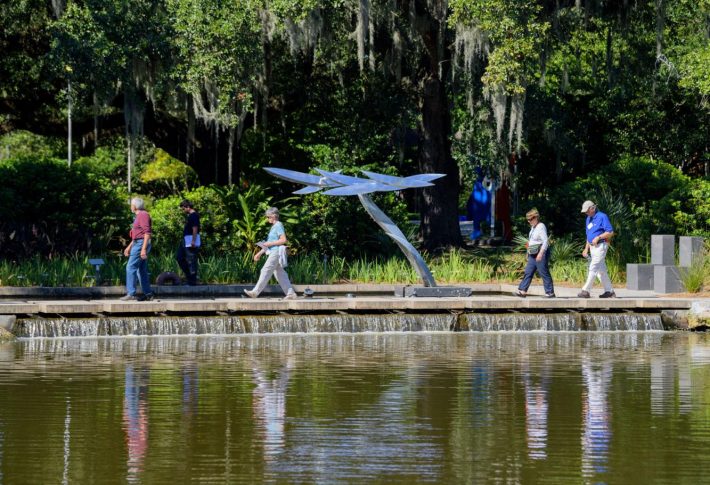
Emery, whose piece “Wave” used to stand in front of the museum, “was absolutely a dedicated workaholic,” Bullard said.
In writing the introduction to Philip F. Palmedo’s book “Lin Emery,” the writer John Berendt described the spell “Wave” can cast: “Its eight silvery crests depicted a changing seascape – undulating in the wind, becalmed in the still air, shimmering on sunlit days and turning gray under hovering skies. … Its message, especially to children, seemed to be that serious art did not have to be static, and that abstract need not be incomprehensible.”
“Wave” has been moved to the museum’s Sydney and Walda Besthoff Sculpture Garden. Sydney Besthoff, who owns two other Emery pieces, described her as “a very determined woman.”
That determination started early because Emery grew up in a troubled household. Though both of her parents had artistic roots – her father was a major donor to the Metropolitan Museum of Art, and the composer Kurt Weill was one of her mother’s cousins – the atmosphere was hardly stable, Palmedo wrote.
The two even quarreled over their daughter’s name. According to the birth certificate, her name was Leonor – the name of her father’s first wife – but her mother changed it to Lenore.
Their daughter, who took boxing lessons as a child with Edward Albee, changed it to Lin as soon as she could, Palmedo wrote.
Besides amounting to a revolt against both parents, her new name masked her gender, Bullard said, forcing the world to recognize her by the quality of her work.
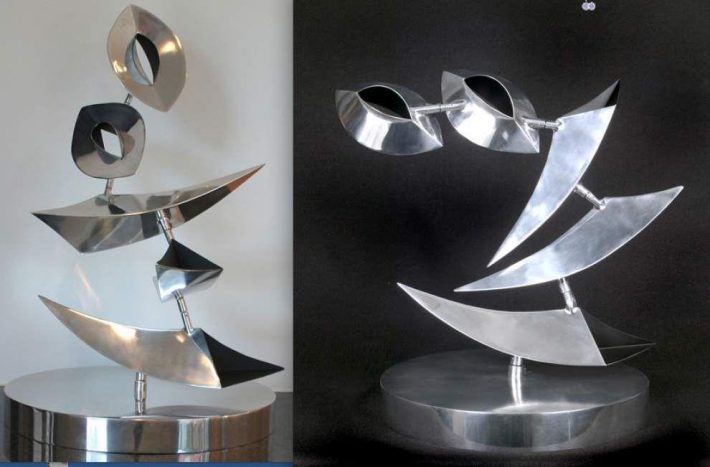
Emery bounced around the country with her governess, Bertha Oliver, and spent time in New Orleans before heading to Paris.
In the City of Light, she walked into the studio of the sculptor Ossip Zadkine in 1949 and asked about lessons. Her career as a sculptor had begun.
Emery returned to New Orleans a year later and worked in clay and plaster before heading to the Sculpture Center in New York City, where she learned welding.
In the mid-1950s, she settled permanently in New Orleans, where she did sculptures for churches and augmented her income by building sets for WDSU-TV. Along the way, she learned blacksmithing, a skill that came in handy when a truck arrived at her French Quarter apartment with a jail-cell door that Pensacola had commissioned her and four other sculptors to turn into works of art.
Emery, who set up welding equipment in her bedroom, told Berendt that New Orleans was “the only place where sculpture was thought of as something for women to do.”
Because of all the industries in the area, there was, she said, no shortage of supplies. A shipbuilding company provided propeller shafts for one piece, she said, and Kaiser Aluminum gave her aluminum for a piece honoring former Mayor deLesseps S. “Chep” Morrison that went in front of New Orleans’ City Hall.
“International Nickel commissioned a sculpture made with an experimental metal they were developing for use in space,” she said. “It was a combination of stainless steel and nickel they called Incoloy. When I welded it, it screamed.”
As her career evolved, so did the ways Emery found to make her pieces move. At first, she told Berendt, she used the flow of water, then hid motors with magnets, before settling on ball bearings in the 1970s.
“They reduce resistance, so the pieces glide as they rotate,” she said, adding that the combination of ball bearings and wind proved to be much more reliable than water or magnets.
Emery’s artistic interests didn’t stop with sculpture. She and the composer Jay Weigel studied what he called “the relationships between visual and sonic entities and how everything fits together.”
Emery designed the sets for his opera “Ash Wednesday,” and she commissioned a piece, “The Light Is On,” that will be played at her memorial service as part of a concert of modern music.
“She had the willingness to explore everything in such a profound way,” Weigel said.
And she kept on going, even as she grew progressively weaker, Roger said. “She didn’t want to give up. It was just that will. She didn’t want to let go.”
Survivors include a son, Brooks Braselman.
Emery was married twice. Her first marriage, to Chris Joslyn, ended in divorce. Her second was to Shirley Brooks Braselman. Both have died.
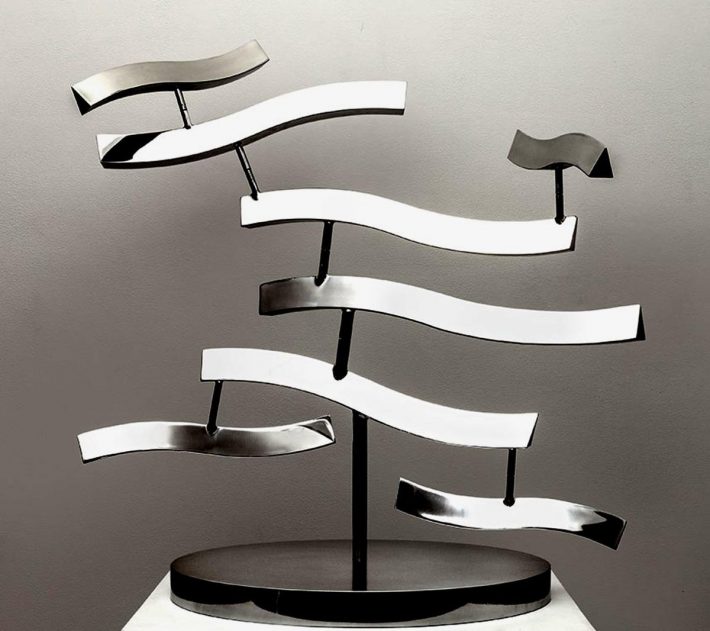
Lin Emery
Anole, 2017
Polished aluminum
42 x 40 orbit inches
26 inches base
John Cleveland, Lin Emery, and Kathryn Scurlock at Lin’s opening at the Arthur Roger Gallery 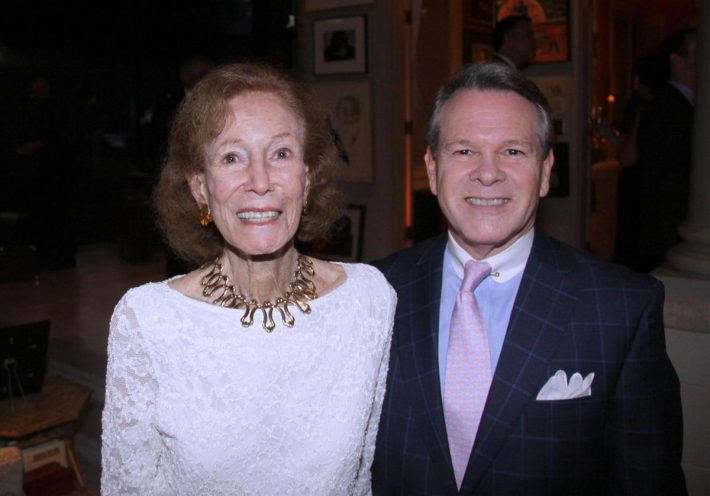
“O What a Night” patron party – Sculptor Lin Emery, Tommy Westervelt 
A portrait of Lin Emery by artist Alexandra Kilburn of Where Y’Art, as commissioned by NOLA.com | The Times-Picayune for its “300 for 300” celebration of fNew Orleans’ tricentennial. 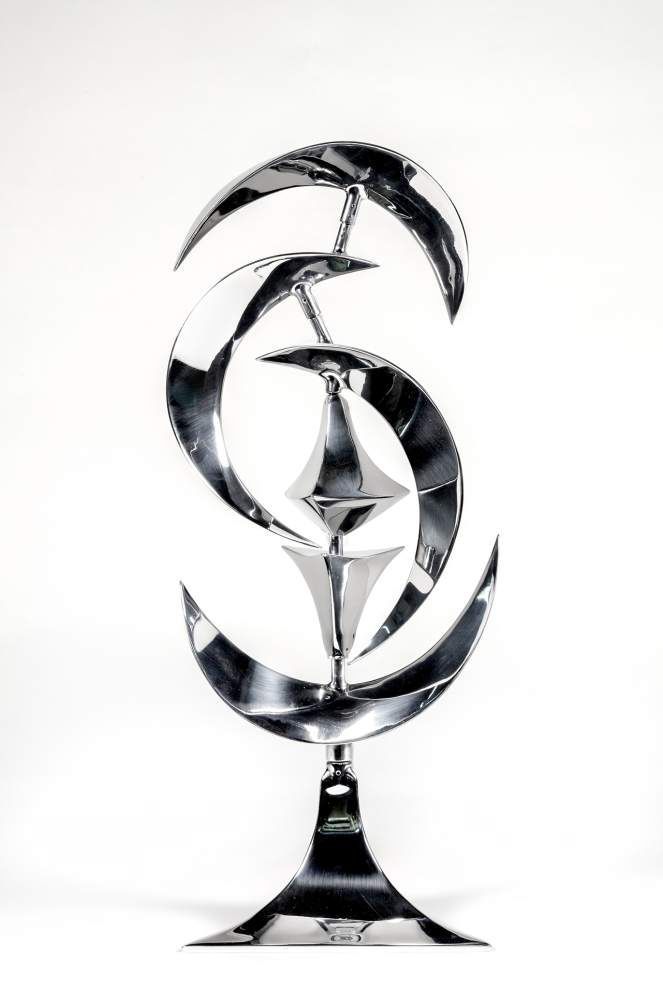
Lin Emery, “Fan Tree” 2015 – Photo courtesy of the artist and Arthur Roger Gallery 
Louisiana sculptor Lin Emery creates a maquette out of pieces of paper when creating a sculpture. Advocate staff photo by Robin Miller 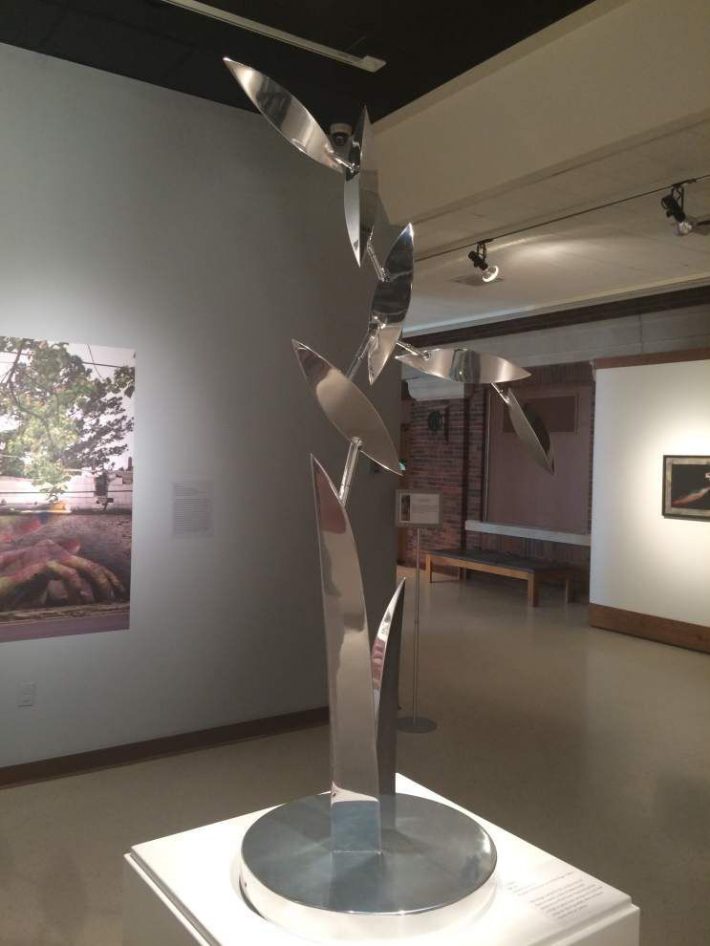
The design concept for this 2010 sculpture. “Phil,” by Lin Emery is similar to that of her piece, “Anthem,” located downtown on Third Street. Advocate staff photo by Robin Miller
